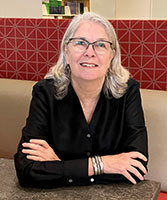This year marks the 200th anniversary of the construction and opening of the Baltimore Infirmary – today’s University of Maryland Medical Center (UMMC). The Baltimore Infirmary, shown in this engraving, was the first hospital built for use by a medical school in the United States. The foundation was laid on the southwest corner of Lombard and Greene Streets – the current location of the HSHSL – in June 1823; the 60-bed Infirmary was ready for patients by September 1823. Perhaps it is only fitting that the library sitting on the site of the first hospital building is now the home of unique historical documents that bring to light the importance of clinical experience in medical education. The following highlights a selection of hospital related items in the HSHSL.
By the 1860s, the Baltimore Infirmary had grown to become the biggest hospital in Baltimore and was known as “University Hospital,” though its name wasn’t officially changed until the 1870s. The University Hospital was integrated into the education of the students in the School of Medicine. The 1844-1845 Academic Catalog outlines the number and type of operations occurring in the hospital for the prior year. For a better understanding of the early costs associated with a hospital stay, Historical Collections holds an October 27, 1871 receipt for “board & attendance for one week @ 15$ per week” for a Capt. Summers G. Lady.  This is the equivalent of receiving a bill for $375.85 today. In 1887, a small group of women formed what would become the Women’s Auxiliary of the University of Maryland Hospital. The first of its kind in Maryland – and perhaps in the country – this group aimed to raise funds to support the hospital as well as visit the sick and attend to the social needs of the patients. The records of this group have been digitized in the Digital Archive.
This is the equivalent of receiving a bill for $375.85 today. In 1887, a small group of women formed what would become the Women’s Auxiliary of the University of Maryland Hospital. The first of its kind in Maryland – and perhaps in the country – this group aimed to raise funds to support the hospital as well as visit the sick and attend to the social needs of the patients. The records of this group have been digitized in the Digital Archive.
During the world wars, nurses and physicians from the University Hospital as well as pharmacists and dentists from the University of Maryland, served together in base and military hospitals. In June 1917, Base Hospital Number 42 was formed by University Hospital faculty, most notably Dr. Archibald C. Harrison. The Hospital was stationed in Bazoilles-sur-Meuse, France, and operated until 1919. Historical Collections houses a few photographs, like the one shown here, of the base from Dr. John Carey Taylor, who served as a corporal at Base Hospital No. 42. 
During World War II, the 42nd Medical Hospital was reactivated by the Office of the Surgeon General. At first, the 42nd Medical Hospital was slated to be a single 1000-bed hospital, but within weeks of its deployment, the hospital was reallocated to two 500-bed hospitals: the 42nd and 142nd General Hospitals. The 42nd General Hospital trained in Fort Custer, Michigan until May 1942, when they headed to Melbourne, Australia, finally arriving in Stuartholme, overlooking Brisbane in July 1942. When peace was signed in 1945, the 42nd had just arrived in Yokohama and treated 550 prisoners of war. The 42nd treated over 50,000 patients and disbanded November 11, 1945. The HSHSL’s Digital Archive includes a published volume on the history of the 42nd General Hospital.
The 142nd General Hospital first trained at Fort Riley, Kansas in April 1942 and headed to New Zealand in May 1942. In 1943, the 142nd moved to Fiji before moving to Calcutta, India, in 1944. When it was deactivated in February 1946, the unit had handled nearly 18,000 casualties. Recently, a scrapbook celebrating the accomplishments of University Hospital staff was found in Historical Collections. The Scrapbook has been digitized and is available in our Digital Archive. The scrapbook contents – dated April 16, 1942 to April 1, 1946 – include newspaper clippings, photographs, pamphlets, and correspondence from the doctors, nurses, dentists, and pharmacists who served in the two General Hospitals in World War II.
Between the world wars, a new University Hospital building was constructed directly across the street from the old building. The new building’s 1934 opening followed years of fundraising. Historical Collections holds two patient pamphlets from University Hospital that have recently been digitized and uploaded to the Digital Archive. One, dated 1955, includes information about entering the hospital, caregivers, billing information and charges, and discharge from the hospital. The other pamphlet, though undated, is signed by the hospital director, G. Bruce McFadden, who was active in the 1970s and 1980s. The information it contains is similar to that of the first pamphlet, but with the addition of maps, patient rights and responsibilities, and telephone directories.
Beginning in 1977, talks began to separate the Hospital from the UMSOM. The hospital, which was expensive to operate and maintain, was starting to become rundown. In 1984, the state passed legislation separating the University and Hospital. The result was UMMC, a private, nonprofit hospital. Today the UMMC and UMSOM are still closely connected, with students from the UMSOM receiving clinical experience in the UMMC.















